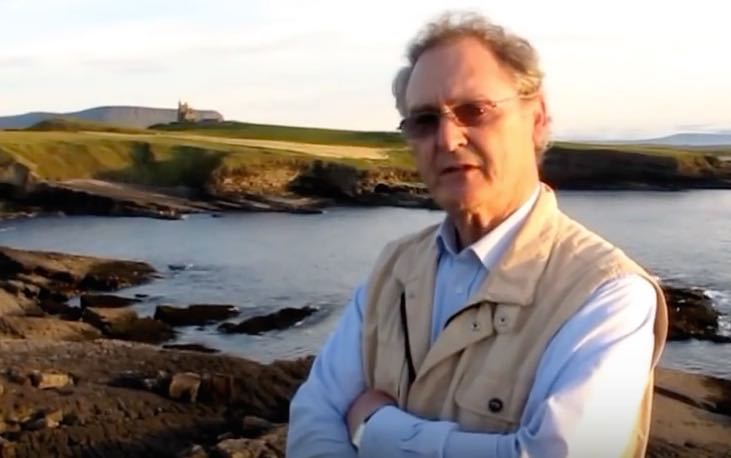Our film producers are fortunate to be working closely with County Sligo local historian Joe McGowan, who serves as an Heritage Specialist with the Irish National Teachers Organisation ‘Heritage in Schools Scheme’.
Listen to Joe McGowan’s interview with Niall Delaney OceanFM Ireland |
Sligo famine victims to be buried in Canada following identification of remains (June 10, 2019)
Native of Mullaghmore, Co. Sligo, McGowan was born on the family farm where he worked in his early years until emigrating to the US in the ‘60s. Upon his return in the late ‘70s, he took up salmon and lobster fishing off the Sligo coast aboard his half-decker fishing boat the ‘Connaught Ranger’. Retaining his interest in the sea, he now conducts boat trips to Inishmurray aboard the ‘Excalibur’. (see film below). He is fiercely dedicated to preserving, visually and orally, Ireland ’s disappearing traditions and customs.
Through County Sligo’s online heritage site, McGowan has been chronicling the Sligo famine immigrant experience and creating a virtual network among the Sligo diaspora around the world. In particular, is his work on Gore-Booth, Lissadell, Palmerston, and the Sligo Famine Emigration Experience of the 1840s.
His interest in heritage, folklore and history has led to the writing and publishing of several books on the subject. His Sligo Heritage website provides an understanding, not just of Sligo’s history, and heritage, but also a taste of current events.
Sligo’s “Memory Harbour”
Commemorating the heart wrenching legacy of the region, a bronze memorial has stood in profile at Sligo Harbour since the 150th anniversary of ‘Black ’47’. As a family comfort each other, the child points to the New Land where a ship will soon take them.
In the background, a plaque entitled ‘Letter to America, January 2, 1850’ reads:
“I am now I may say alone in the world all my brothers and sisters are dead and children but yourself…
We are all ejected out of Mr. Enright’s ground the times was so bad and all Ireland in such a state of poverty that no person could pay rent.
My only hope now rests with you, as I am without one shilling and as I said before I must either beg or go to the poorhouse… I remain your affectionate father Owen Larkin be sure answer this by return of post”
Between 1847 and 1851, over 30,000 people emigrated through the port in Sligo. This sculpture is one of a suite of three sculptures commisioned by the Sligo Famine Commemoration Committee to honour the victims of The Great Hunger.
Heritage Specialist Joe McGowan leads local historic tours in Sligo. Here is a film he narrated and produced about Inishmurray, an ancient island off the coast of Sligo in Ireland.

